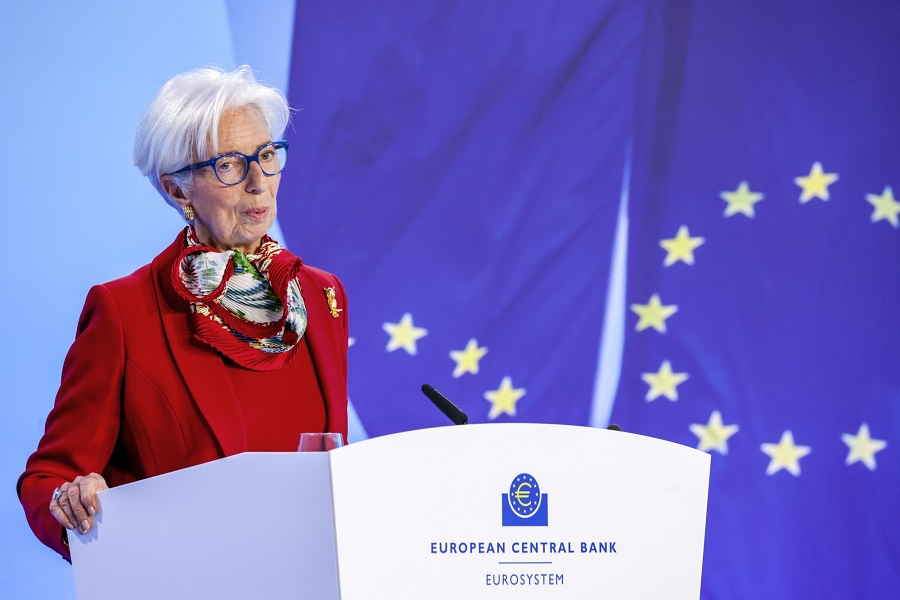Will central banks cut rates as expected?
Perhaps understandably, there’s been what might be called ‘rate-cut-creep’ in the markets as it seems that both analysts and market pricing have inched forward the projected start of rate cuts from the major central banks.

The Standard Bank still thinks the Fed will not cut until Q3 with the ECB and BoE in 2Q24. Photo: ECB President
>> What to expect from Central Banks’ monetary policy?
The Federal Reserve might have hurried things along at last week’s meeting but, in truth financial markets were already starting to look towards earlier rate cuts from the major central banks. As the Standard Bank surveys the situation today, the Fed is given a more than 50% probability of cutting rates from June while ECB pricing tips the 50% mark in April and the UK in May.
Moreover, markets have started to price in more rate cuts with the December 2024 fed funds future, for instance, assuming 50-bps more of rate cuts than just under a month ago. But for all this jockeying for position amongst traders and analysts, we’ve not shifted our expectations materially, if at all.
The Standard Bank still thinks the Fed will not cut until Q3 with the ECB and BoE in 2Q24. Because, there’s the simple historical fact that the markets are usually out in front whenever the monetary policy cycle seems likely to change. Sometimes this is validated as the central bank in question rushes through rate cuts but, on other occasions the central banks wait it out and market expectations have to adjust. One reason why we see rate-cut cycles in the UK and euro zone starting a little later than market pricing is wages.
Central banks will want a clear view that wages have continued to moderate before sanctioning lower policy rates. In the UK and in the euro zone we believe that both central banks won’t have sufficient clarity on this until the spring at the earliest. This is because the spring period sees a number of important wage negotiations. In the UK, for instance, wage awards tend to be bunched into two months of the year; January and April, with the former dominated by the private sector and the latter the public sector. Of course, it is possible that the BoE starts to cut rates at an early stage in 2024 if the economy really crumbles, or it has a clear sense that future wage awards will be more in line with the 2% inflation target. But the Standard Bank doubts that either will happen.
The same is true in the euro zone where the spring is an important period for wage deals. If these are very elevated then the ECB will have to be cautious about both starting rate cuts and the extent of any reductions. But there is another factor as well, which is also prevalent in the US, which is supply chain pressure. For while supply chain pressures stemming from the pandemic and the conflict in Ukraine have clearly dissipated, the issue is that this could have happened at a cost.
>> Prospects for central banks’ monetary policy
To see this just consider the recent Bundesbank survey of German firms. For they, like many others around the world, have been undertaking efforts such as re-shoring, or friend-shoring in order to take the supply of crucial inputs away from countries or regions where geopolitical tensions exist. The clearest of these is the diversification of energy supply away from Russia. But with respect to China as well there are clear signs of fragmentation, meaning that China does not seem to have the ability to export deflation in the way it used to do, even though annual PPI inflation is far below the zero line.
Firms surveyed by the Standard Bank show, not surprisingly, that reshoring and friend-shoring come at a cost and, if that’s a cost that is passed on to consumers, then inflation may become sticky at best and, at worst, start to rise again. If we add to this to other factors, such as the tightness of labour markets, then our sense is that the major central banks won’t be rushed into rate cuts just because market expectations have moved on apace.
But does it matter if the market turns out to be frustrated by how long it takes central banks to cut? The Standard Bank doesn’t think so. It is only if inflation rises again and seemingly outlaws all ideas of rate cuts in 2024 that asset prices will crumble, and it does not think that this will be the case.








